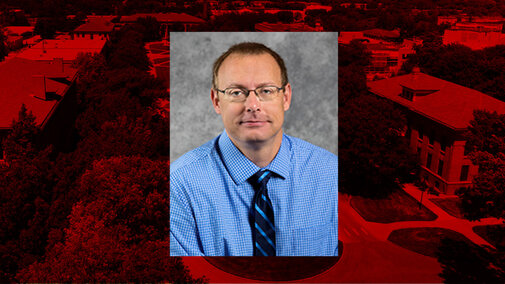Ruben Behnke, a climatologist specializing in the practical application of meteorological data, is the new manager of the Nebraska Mesonet. The mesonet is a network of weather stations that collects data widely used for agricultural, environmental, and emergency management.
Behnke worked more than five years with the South Dakota Mesonet, with duties including station installation, quality control, and writing research proposals. He has a longstanding focus on observational meteorology, including spatial statistics, machine learning, and statistical methods, and taught Climate Risk Management in the Precision Agriculture program at South Dakota State University.
He earned a B.S. in environmental science and field biology from the University of Wisconsin-Green Bay; an M.S. in atmospheric and oceanic science from the University of Wisconsin-Madison; and a Ph.D. in forestry and conservation science from the University of Montana.
“Basic weather observations still form the basis of current atmospheric science, even in lieu of the most sophisticated weather models,” Behnke noted. Effective weather data collection, he said, involves a range of considerations from “site location to web development and the electronics behind the instrumentation.”
Mesonet data have value for a wide array of users including farmers, natural resources districts, and Nebraska Extension educators. In recent years, the number of institutional clients has grown to include the National Weather Service, National Oceanic and Atmospheric Administration, National Drought Mitigation Center, Nebraska Department of Natural Resources, and the U.S. Department of Agriculture’s Farm Service Agency.
The Nebraska Mesonet network, begun in 1981 as one of the first state weather monitoring systems in the nation, measures data including temperature, humidity, precipitation, wind speed and direction, solar radiation, barometric pressure, and soil temperature and moisture levels.
“Farmers often use our data to gauge when planting, spraying, or harvesting conditions are right based on parameters such as accumulated Growing Degree Days or soil moisture,” Behnke said. Emergency managers, NRDs, and local authorities “use our data to predict flooding potential, heat and cold risk/values, and much more.”
The Mesonet is part of the Nebraska State Climate Office, located in the University of Nebraska-Lincoln’s School of Natural Resources.
Current funders for the Nebraska Mesonet include the Nebraska Department of Natural Resources, UNL’s Institute of Agriculture and Natural Resources and School of Natural Resources, various Nebraska Natural Resources Districts, and individual ag-sector sponsors. Earlier this year, the Nebraska Legislature approved an interim study to look at options for sustainable, long-term funding for the Mesonet.

